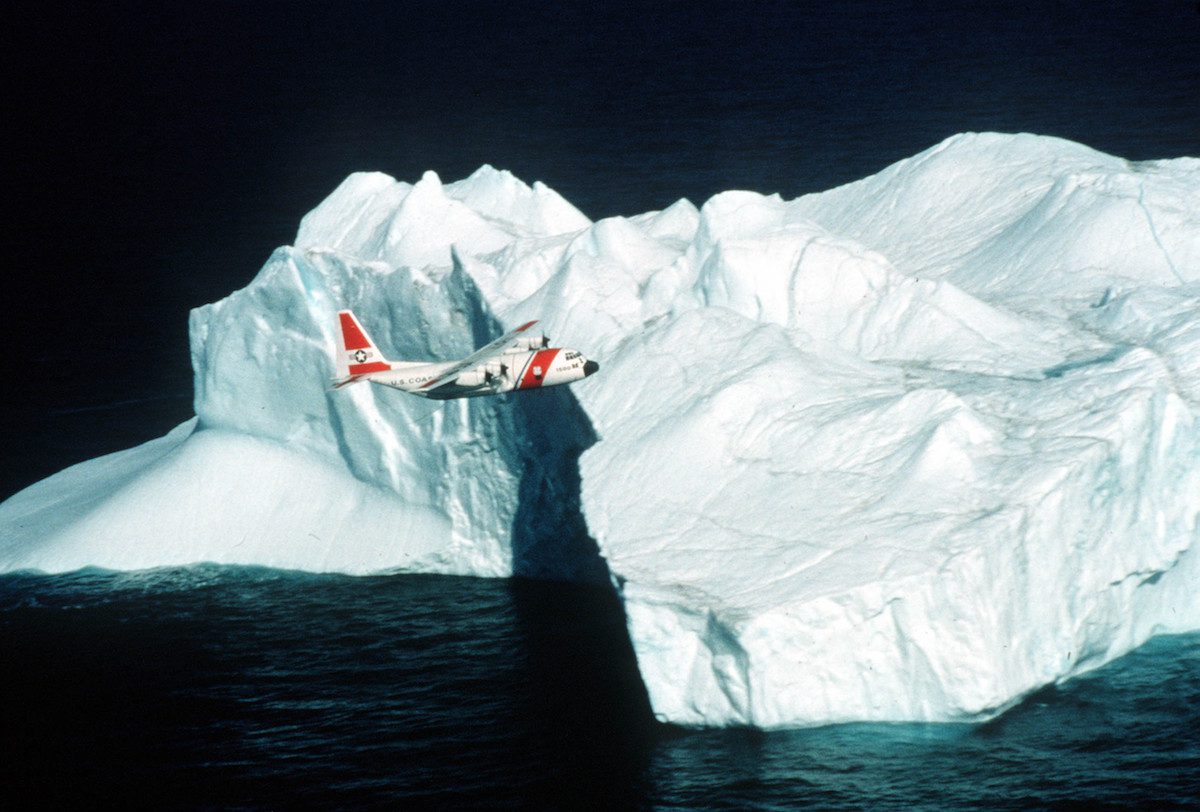The Harsh Reality of US Coast Guard Migrant Policy
by John Konrad (gCaptain) When merchant and cruise ships rescue migrants at sea, they offer more than just a lifeline from the perilous waters; they provide critical sustenance and care....


A Coast Guard C-130 fixed wing aircraft overflies an iceberg during patrol. Service with the International Ice Patrol is one of the many operations of the C-130. (U.S. Coast Guard photo by Petty Officer 1st Class Brandon Brewer)
The International Ice Patrol is an organization with the purpose of monitoring the presence of icebergs in the Atlantic and Arctic Oceans and reporting their movements for safety purposes. It is operated by United States Coast Guard but is funded by the 13 nations interested in trans-Atlantic navigation.


Founded in the wake of the RMS Titanic disaster, the Ice Patrol has been active since 1913. During this period, the Ice Patrol has amassed an enviable safety record. No vessel that has heeded the Ice Patrol’s published iceberg limit has collided with an iceberg.
Ice Patrol and the Canadian Ice Service (CIS) issue one daily iceberg analysis under the North American Ice Service (NAIS), a collaborative agreement to unify North American ice information and improve service to mariners. The iceberg analysis is published in text bulletins and a graphical chart by 0000Z and when changing conditions require a revision.
North Atlantic shipping lanes have always been hazardous to navigate and captured global attention in April 1912 when the RMS Titanic sank after it struck an iceberg. The incident prompted maritime nations with ships transiting the Grand Banks off Newfoundland, Canada, to establish an iceberg patrol in the area. Since 1913, the U.S. Coast Guard has been tasked with the management and operation of the patrol. Except for the years of World Wars I and II, the ice patrol has been active each ice season since its inception.
Their mission is to monitor the iceberg danger near the Grand Banks of Newfoundland and provide the iceberg limit to the maritime community, including ice and current conditions.
The ice patrol is a U.S. Coast Guard unit however the Canadian Ice Service, ice patrol and U.S. National Ice Center collaborate under the North American Ice Service. The ice patrol produces North American Ice service reports from February through July when icebergs may be present on the Grand Banks and the Canadian Ice Service produces the reports the rest of the year when icebergs are normally restricted to Canadian coastal waters.
This is the only location in the world where icebergs endanger a major shipping route, and the ice patrol provides accurate and timely iceberg information to assist transatlantic mariners in avoiding them. Maritime traffic between Europe and North America typically follows routes that are intersected annually by an average of 500 icebergs.
The ice season is the seasonal period when icebergs can be present on the Grand Banks. The International Convention for the Safety of Life at Sea defines the “ice season” as the period between February 15 and July 1, however the commander of the ice patrol can extend the period based on conditions.
SOLAS – or the International Convention for Safety of Life at Sea – is generally regarded as the most important of international treaties concerning the safety of merchant ships. The first version was adopted in 1914, in response to the sinking of the Titanic. The main objective of SOLAS is to specify minimum standards for the construction, equipment and operation of ships, compatible with their safety.
Iceberg detection in the past relied on visual sightings from boats on patrol in the area. As airplane performance improved however, the ice patrol integrated airplanes into reconnaissance operations and after 1960, surface patrol craft took a secondary role to aerial reconnaissance.
Iceberg reconnaissance is conducted primarily with aircrews from Air Station Elizabeth City, N.C., in an HC-130J Hercules airplane, the perfect platform for their mission. Using the airplane’s specialized sensors, radar and visual observations are employed for iceberg detection and identification.
The seas where the North Atlantic shipping lanes pass near the Grand Banks are particularly challenging for mariners due to frequent fog and high seas. The combination can make it extremely difficult for even a modern vessel to detect an iceberg and avoid it. If there were no ice patrol, vessels would have to reduce risk of collision by either slowing speed considerably or avoiding the Grand Banks entirely. Every additional sea mile or hour adds to transportation costs and delivery time. In this age of “just in time” delivery, longer and more costly voyages equal higher costs and higher prices for consumers.
As recently as 2010, a vessel ignoring the ice patrol’s warnings collided with an iceberg. Fortunately the damage was not catastrophic and the vessel was able to divert to a safe port. The vessel required considerable hull repairs and was unable to return to sea for some time. No vessel heeding ice patrol’s warnings has ever collided with an iceberg.
Check out the International Ice Patrol‘s website for more information, or you can read about the opening of the 2017 season.
This article was written by by LT Stephanie Young, USCG. It originally was published on the USCG’s Compass blog.
Join the gCaptain Club for curated content, insider opinions, and vibrant community discussions.


Join the 105,959 members that receive our newsletter.
Have a news tip? Let us know.
Access exclusive insights, engage in vibrant discussions, and gain perspectives from our CEO.
Sign Up




Maritime and offshore news trusted by our 105,959 members delivered daily straight to your inbox.



Essential news coupled with the finest maritime content sourced from across the globe.
Sign Up